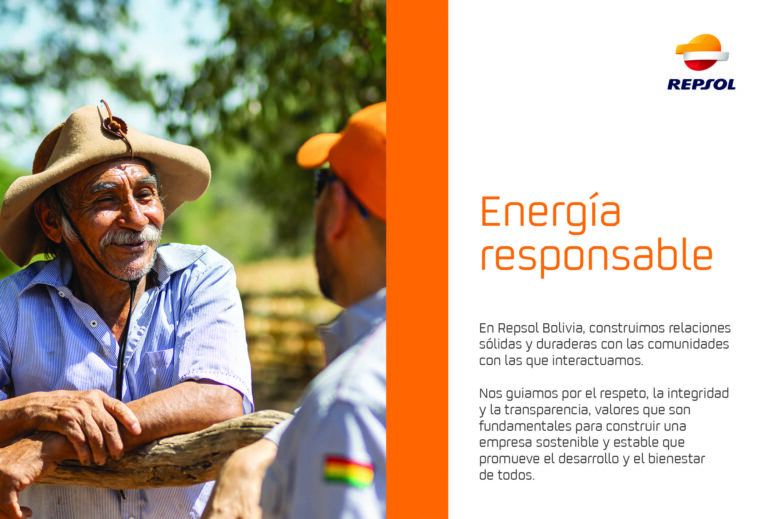This crisis is primarily characterized by a disruption in the supply of fuels such as diesel and gasoline, as well as low institutional capacity and energy governance, according to analysts invited to the first colloquium of the magazine in 2025.
ISSUE 139 | 2025
Vesna Marinkovic U.

Bolivia begins 2025 burdened by a “cascade” energy crisis, according to some sector analysts. They point out that this crisis is mainly characterized by a disruption in the supply of fuels such as diesel and gasoline and by low institutional capacity and energy governance, which is exacerbating uncertainties not only within the energy sector but also at the national economic level.
Francesco Zaratti, an energy analyst, asserts that this crisis has two fundamental aspects: a financial one and an energy-related one. He explains that the first is linked to the shortage of foreign currency, which hinders the importation of essential fuels such as diesel and gasoline and limits investments in energy exploration and development. He adds that the second is marked by the continuous decline in hydrocarbon production, a sector that has seen its levels plummet since 2014, forcing the country to increasingly rely on fossil fuel imports.
For Raúl Velásquez, an analyst at Fundación Jubileo, one of the causes of this situation is poor management, which has prioritized political interests over technical criteria in key companies such as Yacimientos Petrolíferos Fiscales Bolivianos (YPFB) and the National Electricity Company (ENDE). The other cause is a restrictive regulatory framework, led by Hydrocarbons Law 3058 and the country’s own Political Constitution, which has made it difficult to attract the private investments necessary for a sector that demands high levels of risk.
“The ammonia and urea plant is a prime example of the incompetence of those responsible for the sector. Since its inauguration, it has suffered constant failures, such as the recent malfunction in one of the boilers, which has once again halted its operation,” Zaratti stated during his participation in the first ENERGÍABolivia colloquium at the beginning of 2025.
Both analysts emphasized that this crisis also highlights Bolivia’s heavy dependence on hydrocarbons. Currently, 81% of the energy consumed in Bolivia comes from fossil sources such as natural gas, diesel, and gasoline, while the electricity sector also relies heavily on hydrocarbons for power generation.
The lack of foreign currency, combined with the growing need to import fuels, has created a vicious cycle that threatens to deepen the crisis in the coming months. “If immediate structural measures are not taken, the outlook can only worsen,” both analysts warned.
BETWEEN IMMEDIATE SOLUTIONS AND THE NEED FOR A SUSTAINABLE TRANSITION
In light of the challenges posed by Bolivia’s energy crisis, analysts highlight a concerning disconnect between the government’s strategy and the country’s real needs. While the government opts for short-term measures and “patches” aimed at addressing immediate crises, these experts believe that the true path to energy sustainability lies in comprehensive planning that spans the short, medium, and long term.

Analysts agree that the energy transition is a process that will take decades, but it must begin with concrete steps.”.
Within this context, the use of biofuels one of the pillars of the government’s strategy has been heavily criticized by Zaratti, who argues that “not only are they economically unsustainable, but they also create environmental and technical problems.” He added that “the use of biofuels depends on arable land, which means competing with food production and increasing the use of fertilizers and pesticides, affecting the environment.” Additionally, he noted that blending gasoline with ethanol has caused damage to engines not designed for it, a problem that could escalate if automakers and consumers start demanding guarantees.
For Zaratti, another fundamental mistake in government policy is its emphasis on maintaining fuel supply, when the priority should be reducing demand. This, he said, not only deepens the country’s dependence on imports but also perpetuates the problem of subsidies. “Low fuel prices have encouraged smuggling and created a market imbalance, as evidenced by the long lines at gas stations whenever a fuel tanker arrives,” he concluded.
SHORT AND MEDIUM-TERM ALTERNATIVES
Experts point out that Bolivia still has short-term options to ease the crisis. One of them is to promote the use of vehicular natural gas (VNG), which can partially replace gasoline and reduce pressure on imports and subsidies. Each cubic meter of VNG consumed represents a liter of gasoline saved, which would help reduce foreign currency commitments and alleviate the financial crisis.
However, in the medium and long term, the solution inevitably involves a well-planned energy transition. According to Zaratti, this transition must go beyond installing isolated solar plants. It requires a national plan that includes opening the electricity market to the private sector, promoting electromobility, developing infrastructure for electric vehicle charging, and, most importantly, implementing a financial program to recycle gasoline-powered vehicles.
“Energy transition is not just about installing solar panels; it is a structural change that must be supported by national consensus and state policies. We need a long-term plan that transforms our energy model sustainably and efficiently,” Zaratti emphasized, noting the difference between a state policy and a government policy.

ENERGY CRISIS AND THE NEED FOR STATE POLICIES IN BOLIVIA
In this context, analysts pointed out that, in the midst of an energy crisis affecting both supply and demand, Bolivia faces the challenge of defining strong and sustainable state policies in the energy sector. “However, this concept, often confused with government policies, requires an approach that transcends changes in government and political ideologies,” highlighted Raúl Velásquez.
He added that a state policy involves clear, permanent, and consensual guidelines capable of guiding the country’s development in key areas such as energy, education, and even the fight against organized crime, regardless of the government in power. He noted that “one of the few state policies we have had in hydrocarbons in Bolivia, which has brought us great benefits, has been the natural gas export contract with Brazil.”
Velásquez clarified that in the case of the energy sector, “having a state policy means establishing long term regulations and strategies that promote sustainability, efficiency, and economic independence elements that currently seem absent in the management of the Bolivian government.”
He also pointed out that “the country has limited its energy policy, focusing mainly on hydrocarbon policy, and within that, on gas policy, neglecting the rest of the hydrocarbons.”
DEPENDENCE ON HYDROCARBONS
For Velásquez, Bolivia’s energy transition faces a structural challenge: the country’s strong economic and fiscal dependence on the hydrocarbon sector. He recalled that currently, more than 35% of public revenues come from this sector, a figure that reaches 85% in regions like Tarija. He stressed that this dependence not only shapes the national economy but also presents a huge challenge in the context of declining hydrocarbon production and the rising cost of fuel imports.
To address this crisis, both experts identified four structural problems that must be resolved in the short term: hydrocarbon subsidies, the decline in hydrocarbon production, the lack of foreign currency for imports, and the state monopoly on fuel imports. They noted that despite recent attempts to liberalize fuel imports, private companies face difficulties in competing with YPFB due to subsidized prices and limited infrastructure.
ENERGY TRANSITION: A LONG-TERM PLAN
Although short-term solutions are urgent, real change requires a comprehensive energy policy that considers the transition to renewable sources as one of its fundamental pillars. This involves, among other things, reforming current regulations to include a new electricity law and a hydrocarbons law with a long-term vision.
Analysts agree that the energy transition is a process that will take decades but must begin with concrete steps. These include diversifying the energy matrix, promoting electromobility, encouraging private investment in the electricity sector, and gradually reducing fiscal dependence on hydrocarbons.
“As a society, we must abandon the idea of magical solutions and accept that this is a long-term challenge. However, every step counts, and the key is to change current policies to lay the foundation for a sustainable future,” said Raúl Velásquez.
Amid global uncertainty and internal challenges such as import dependence, climate change, and even political uncertainties, analysts stated that Bolivia must prioritize strategies to improve its energy security and efficiency. This requires developing a comprehensive approach that considers both short- and long-term solutions, adapting to the specific conditions of each region in the country.
They also emphasized the importance of energy security and the use of local resources by fostering hydrocarbon exploration, harnessing renewable energy sources, improving regional energy integration, and making appropriate use of new technologies.

“…one of the few state policies we have had in hydrocarbons in Bolivia, which has brought us great benefits, has been the natural gas export contract with Brazil.”

